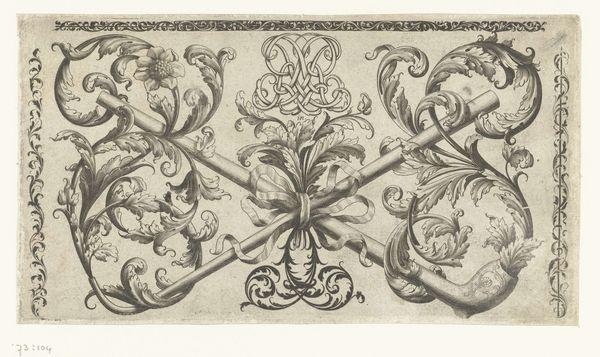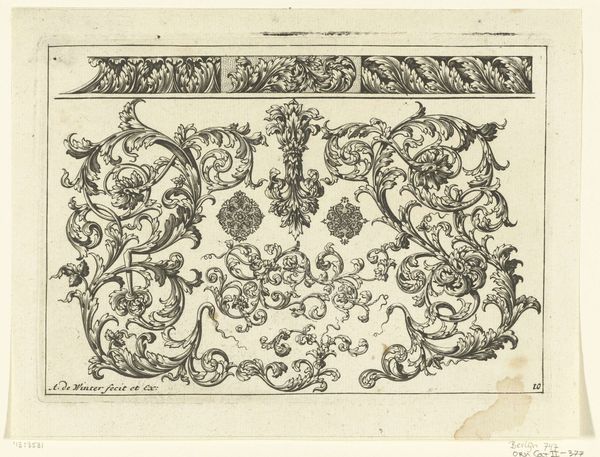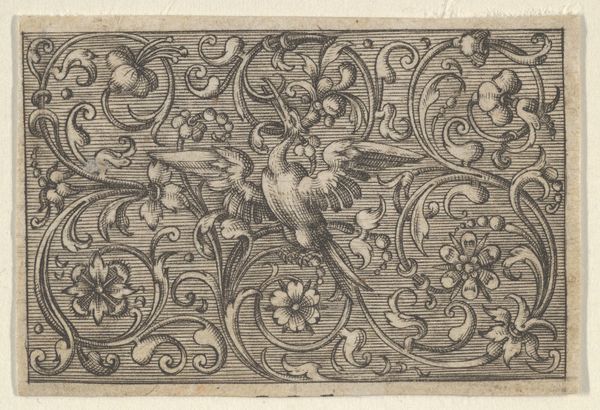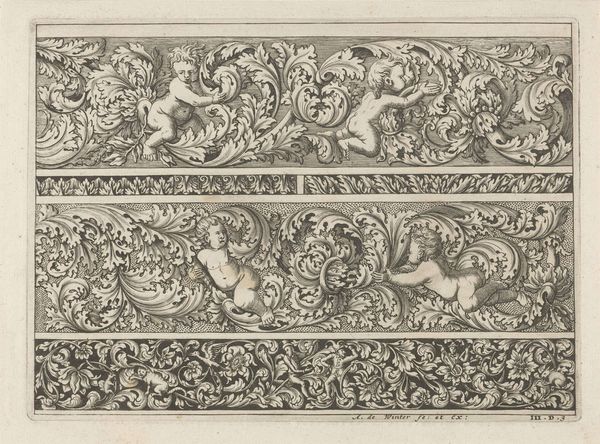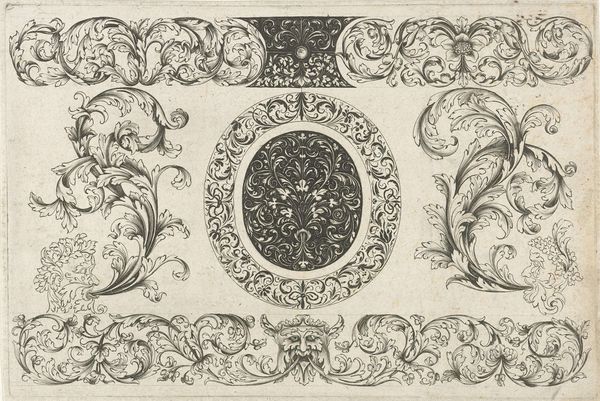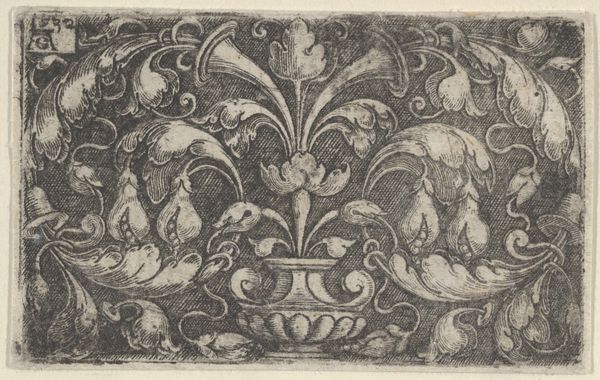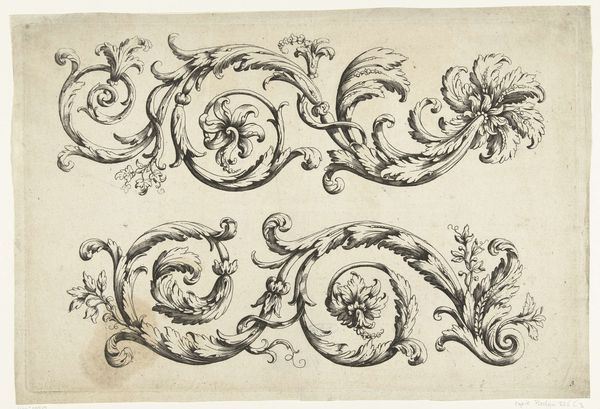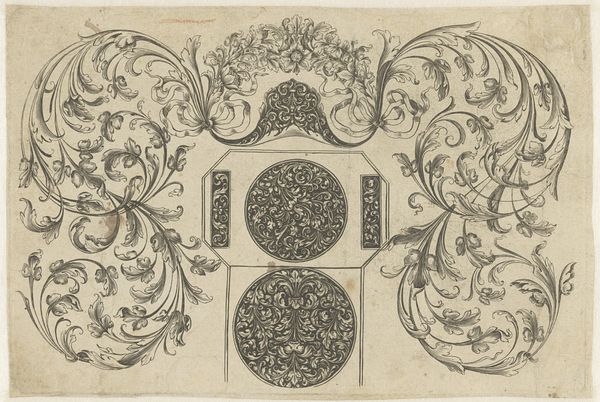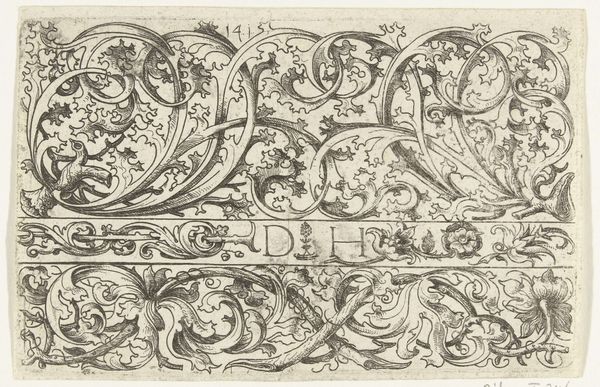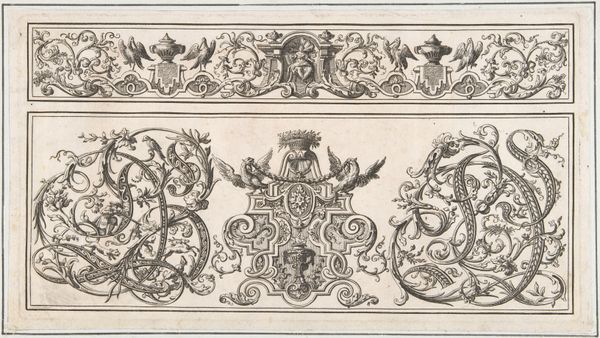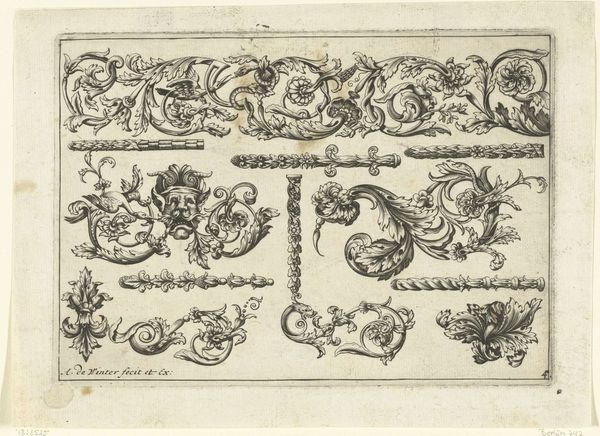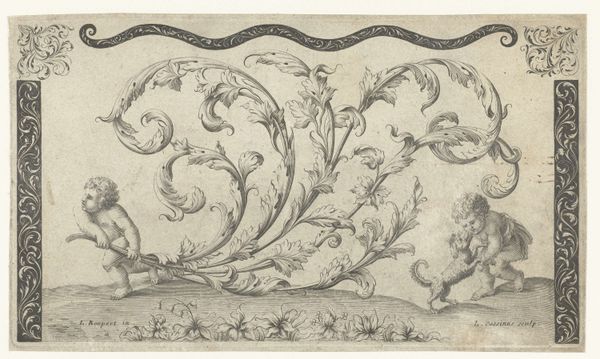
drawing, print, engraving
#
drawing
#
allegory
#
baroque
# print
#
figuration
#
line
#
history-painting
#
engraving
Dimensions: height 44 mm, width 210 mm, height 70 mm, width 210 mm
Copyright: Rijks Museum: Open Domain
Editor: So, this is "Two Medallions Among Leafy Tendrils," a 1668 engraving by Louis Cossin at the Rijksmuseum. It’s incredibly intricate, all these swirling leaves and figures. What do you see in a print like this? Curator: As a materialist, I'm drawn to the production of this print. Consider the labour involved. This wasn't high art in the sense of oil painting; it was reproductive, functional, perhaps even decorative. What level of skill went into it, and how does it challenge our notions of high art versus craft? Editor: I never thought about it like that, more of a decorative object. The allegory and baroque style do scream a certain amount of wealth and luxury, or the appeal to such things at the very least. Curator: Absolutely. Who was this print intended for? Its availability depended on factors such as distribution networks and wealth. Further, we should consider the material itself. The cost of paper, the ink. These all impact our understanding of art as a commodity embedded within systems of production and exchange. Notice the French phrases written. Were these political or satirical symbols that reflected some aspect of 17th-century Dutch society? What do the materials communicate about their world? Editor: It’s funny how that focus shifts things! I mean, knowing it was meant for more “mass production” makes me appreciate it, I think. Curator: Precisely! Understanding these material conditions helps us question established narratives. Instead of solely focusing on its aesthetic, we consider its social context and its connection to the economic forces of the time. It humanizes art. Editor: This engraving holds so much more weight to me now than it did five minutes ago. The layers of its history and purpose really change how I see its worth. Curator: Exactly. It’s about seeing beyond the surface and recognizing the significance of the means by which art enters the world.
Comments
No comments
Be the first to comment and join the conversation on the ultimate creative platform.

